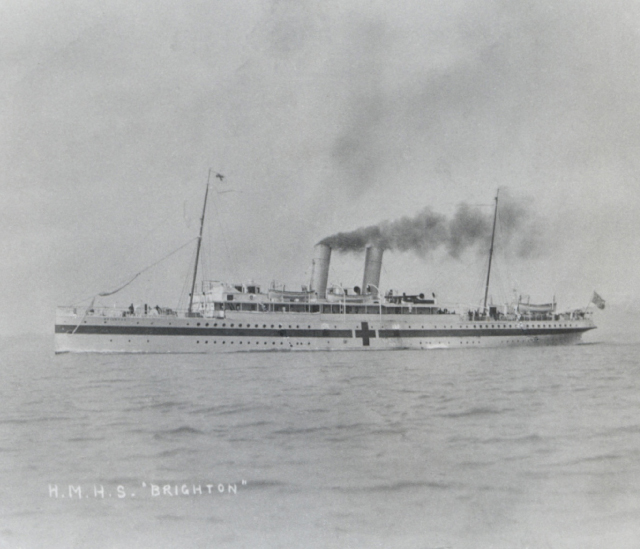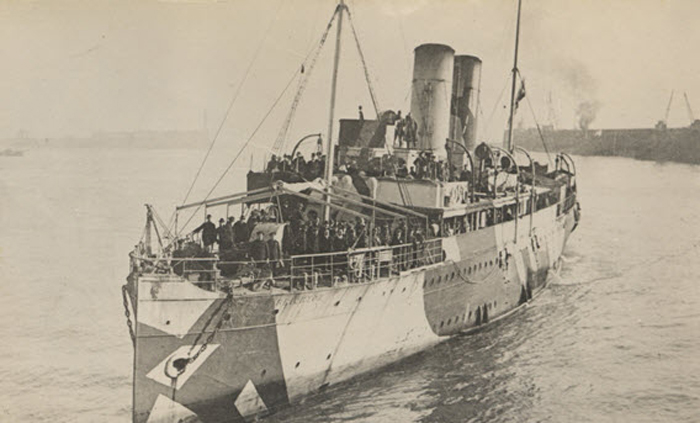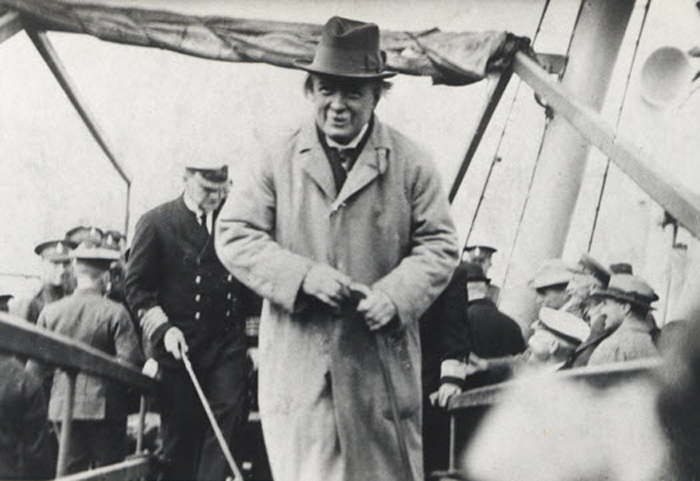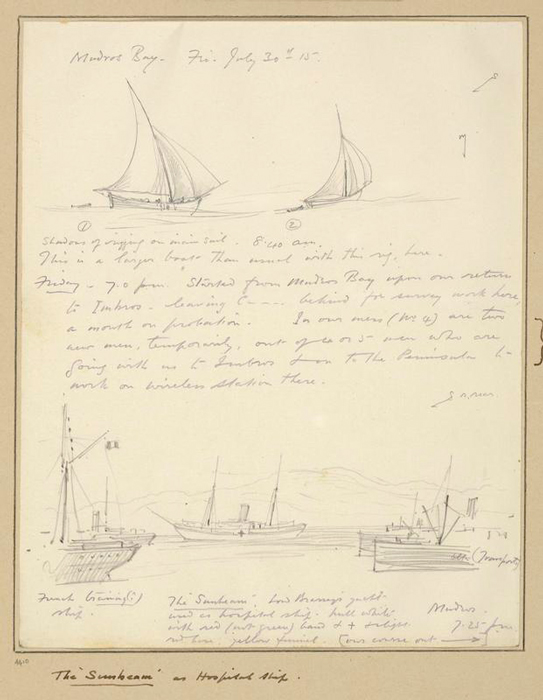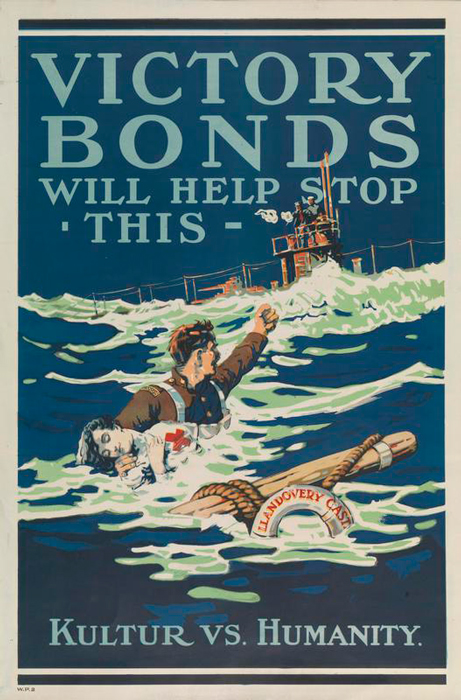The East Sussex ports played an important role as the place of departure for soldiers heading to France, and the arrival point for those returning. Men who had been wounded in action would need to be carried across the Channel by designated hospital ships.
The nature of the fighting during the First World War meant that many men would need to be evacuated from the front in France and receive medical attention. Convalescent camps began to appear along the East Sussex coast shortly after the outbreak of war. However, getting the soldiers from the battlefield to hospitals across the sea was not easy.
The Royal Navy began to requisition ships from across the Empire almost as soon as war had been declared and use them for a variety of duties.
HMHS Brighton IV
Originally built for the passengers of the London, Brighton and South Coast Railway and the London and South Western Railway, the SS Brighton IV was the fourth vessel to bear the name ‘Brighton’ and was a steamship based at Newhaven on the Newhaven – Dieppe ferry route.
The ship had attracted some notoriety in 1910 when it collided with the German five-masted ship Preussen. The Preussen was badly damaged in the initial collision and, when being brought back to port by a tug, was caught in a November storm that broke both anchor chains and led to the ship sinking. The Master of the SS Brighton was found culpable for the collision and eventually committed suicide in a London pub.
At the outbreak of the First World War the SS Brighton (IV) was initially converted into a troopship. In September 1914, she was commended for her work in repatriating British subjects stranded at Antwerp and Captain James Ellis, the new Master of the SS Brighton (IV), was thanked by His Majesty’s Government “for his prompt and ready help at a time when it was urgently needed”.
On 29th November 1914, the SS Brighton (IV) carried King George V from Newhaven to Dieppe for his first visit to troops at the Front. As a souvenir of the occasion Captain Ellis was presented with a gold tie pin from the King. The SS Brighton (IV) was later commissioned as a Hospital ship and was re-christened His Majesty’s Hospital Ship (HMHS) before being fitted out for 140 patients. As a hospital ship she made 973 voyages and carried 122,636 sick and wounded men.
Brighton served continually during the First World War and achieved further distinction by carrying the American President Woodrow Wilson to Dover from France in 1918 and returning the Prime Minister Lloyd George to the country after he had signed the Treaty of Versailles in 1919 that officially brought the war to an end.
On 15th July 1919, the SS Brighton (IV) returned to service on the Newhaven – Dieppe passenger line.
SS Sunbeam
The private yacht Sunbeam was owned by Thomas Brassey. Brassey had been Governor of Victoria, Australia until 1900 and in 1908 was appointed Lord Warden of the Cinque Ports. He had held the mayoralty of Bexhill since 1907 though this was largely an honourary position.
Brassey was a keen sailor and, in 1915, he volunteered the services of the Sunbeam as a hospital ship. He took it upon himself to sail the vessel to the Dardanelles to support the ongoing campaign at Gallipoli.
The Sunbeam arrived at Mudros (a small Greek port on the island of Lemnos) in July 1915 as the British army began preparations for further landings at the Suvla Bay. Whilst Sunbeam was manifestly unsuited to most forms of military or hospital duties, Brassey did receive positive press for his spirit and willingness to join the invasion.
Dangerous seas
Whilst not involved directly in the fighting, hospital ships were frequently exposed to danger. German U-Boats often patrolled along busy waterways between Britain and France and a number of hospital ships were attacked during the course of the war.
The HMHS Donegal and the HMHS Lanfranc were both attacked and sunk by torpedoes on 17 April 1917 inbetween Dover and Le Havre to a joint loss of over 80 lives.
One of the most notorious attacks on a hospital ship came in June 1918 when the HMHS Llandovery Castle was torpedoed and sunk off the coast of Ireland. 234 doctors, nurses, and patients died with only 24 people being rescued from the water.
The sinking of the Llandovery Castle provided the allies with a powerful moral and propaganda weapon, as shown by the poster on the right, for the remaining duration of the war.
Sources
The images and content regarding the SS Brighton IV is courtesy of Newhaven Museum

